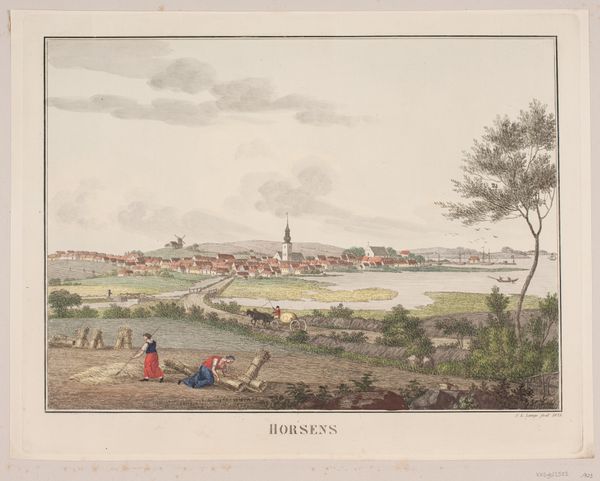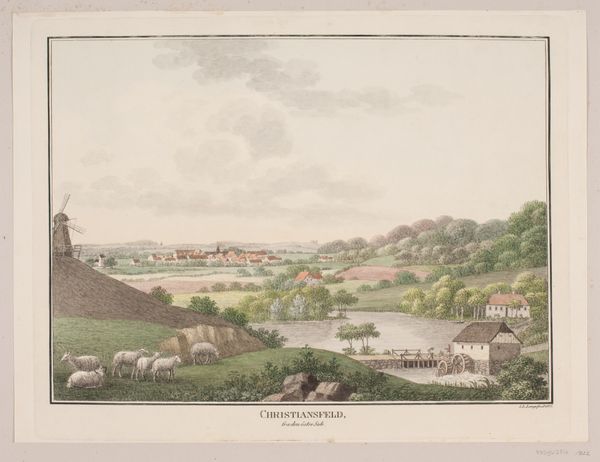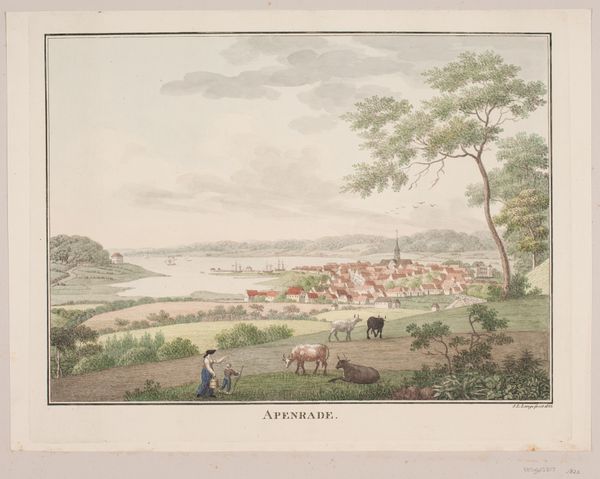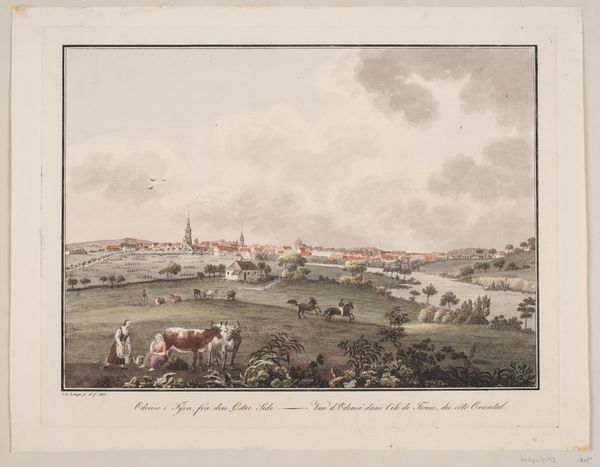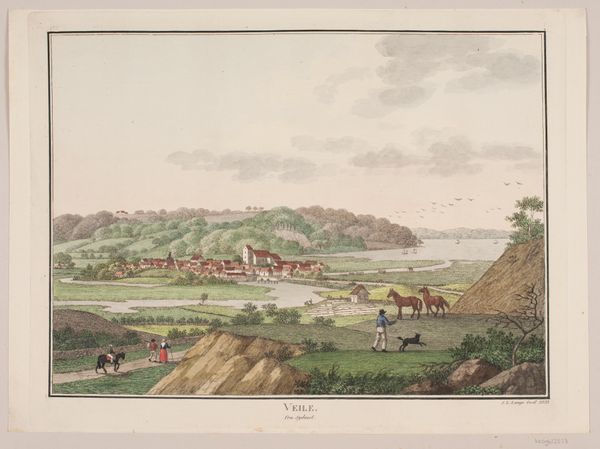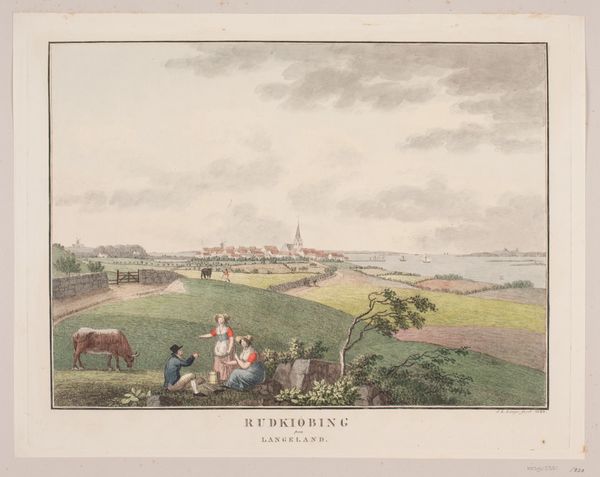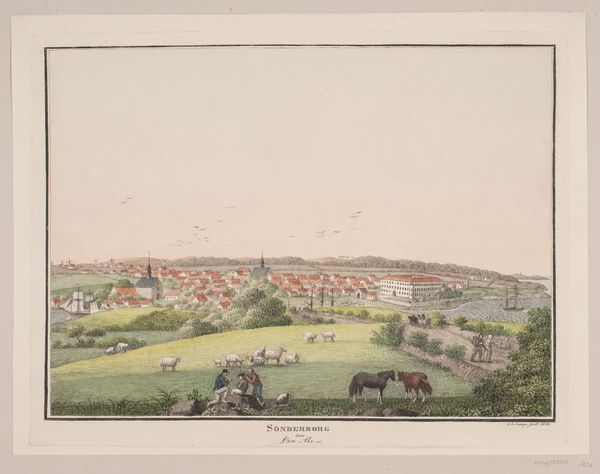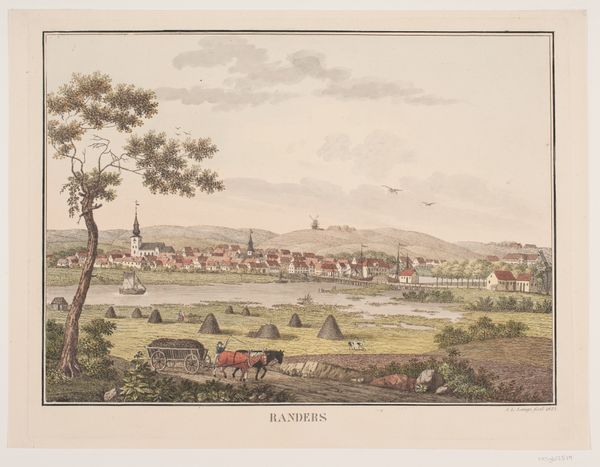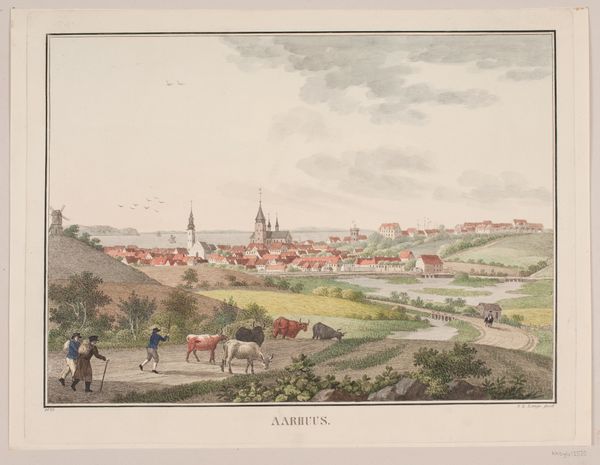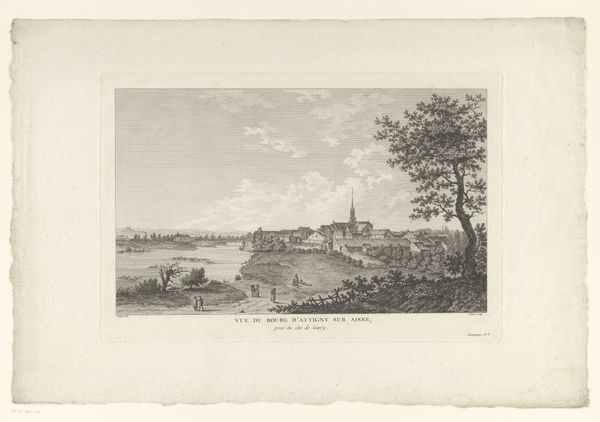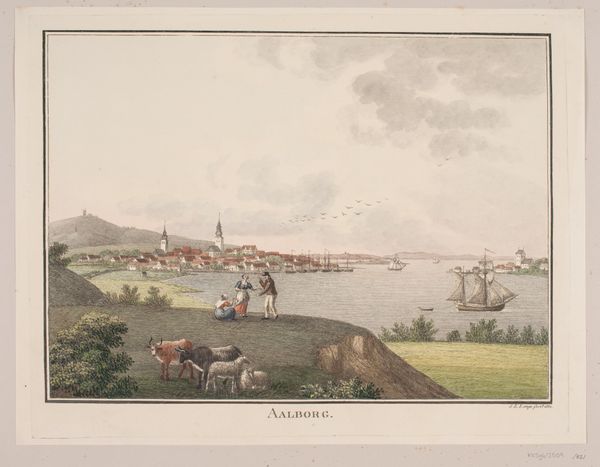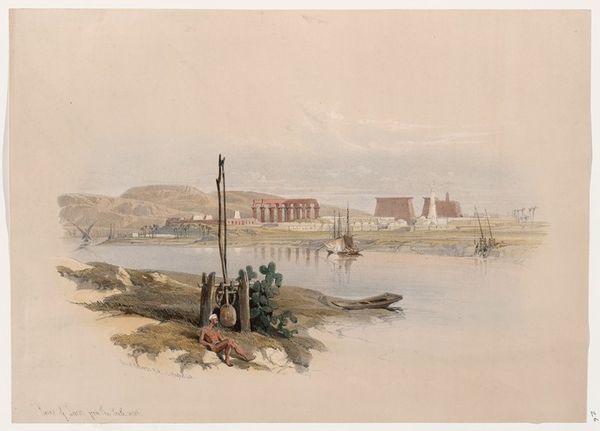
print, etching, watercolor
# print
#
etching
#
landscape
#
watercolor
#
romanticism
#
cityscape
#
watercolour illustration
#
genre-painting
Dimensions: 271 mm (height) x 367 mm (width) (billedmaal), 305 mm (height) x 389 mm (width) (plademaal)
Editor: Here we have "Kolding," an 1823 etching and watercolor by Søren L. Lange. It has such a gentle feel to it, almost like a hazy memory. There's a striking contrast between the architectural precision of the city in the background and the softer, more pastoral foreground. What catches your eye? Curator: Initially, I'm struck by the rigorous geometric structuring Lange employs, subtly contrasting against the ostensibly ‘natural’ setting. Notice how the placement of the castle on the hill establishes a vertical axis, a visual anchor to the composition. Then consider the balance; how is your eye drawn across the pictorial plane? Editor: I see what you mean. The way the buildings kind of cascade down the hill towards the right does make me look around the work. But does that imply any intended statement? Curator: Not necessarily a ‘statement’, but it highlights Lange's control over perspective. The lines are there to structure the eye of the viewer in specific patterns. Note the chromatic scale—the delicate washes move tonally from a darker register below to an airy nothingness, yet everything contributes to pictorial harmony. It all makes it appear to ascend and fade into atmospheric distance. Do you see? Editor: Absolutely. I had focused so much on the subject, but it's like the color and composition are telling their own, very subtle story. Curator: Precisely. The etching's lines define the forms, but the watercolor imbues it with atmospheric depth. Through structural and compositional analysis we can better understand the artwork’s core formal devices and Lang's visual technique. Editor: This gives me a new appreciation for how much intention goes into creating even the most seemingly simple landscape. Curator: Agreed. Through close examination of form and structure, we begin to see how the artwork generates its meaning.
Comments
No comments
Be the first to comment and join the conversation on the ultimate creative platform.
